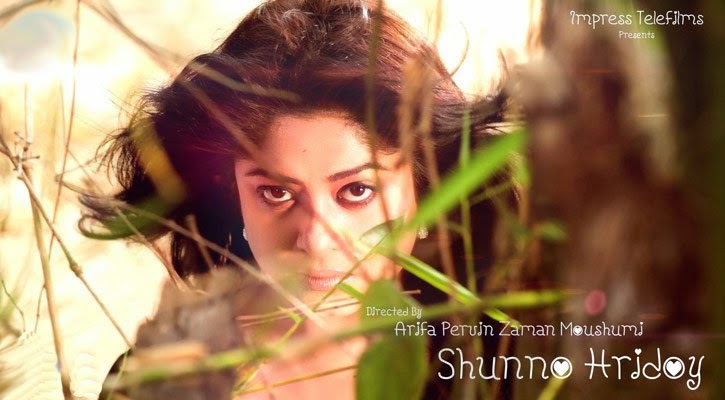Bangla Movie
The nicest thing anyone can tell us is not “I love you,” the nicest thing anyone can tell us is “Have you eaten?” Whoever asks this question the most, loves us the most. After all, everything we do is ultimately to put food on the table, for us and our loved ones. All of us - man, beast, bird, insect and even bacteria - need food to survive. Man and nature are inextricably interwoven by the struggle for food.
The main theme of “Nekabborer Mohaproyan,” a film based on
Nirmalendu Goon’s poem, is the struggle for survival in rural Bengal. Peasants
are working hard to make ends meet but are subdued by the evil Munshi who
cheats them out of fair prices. One of the peasants, the Christ-like Nekabbor-
straight out of Pasolini’s “Gospel According to St Matthew” and trained in SM
Sultan’s “Gymnasium” - rises up to the challenge of facing evil Munshi. The
second theme is love: Nekabbor’s passionate love for Fatema; and his
unconditional love, the greatest kind of love, for nature. Fatema’s father
happens to be evil Munshi’s close associate and soon it turns out Munshi himself
wants to marry her. This dual food/love clash with evil Munshi lead Nekabbor to
leave his beloved village which for him is akin to leaving one’s planet. Just
as we are bound to mother-earth by the umbilical cord of gravity, so is he
bound to the earth of his village. In the background of all this is the war
theme which becomes the heart breaking prologue and epilogue. It begins and
ends with the real poet Nirmalendu Goon in a blood-red punjabi walking on deep
green grass, weeping for an unknown man who just died.
The film has a certain rawness, it has Ritwik Ghatak’s
not-clinically-disinfected-poverty feel, that makes it look realistic; but the
night scenes have such low-contrast photography it is difficult to make out
what is going on. The approach is quite original; but the story is a cliché
spun a million times. The songs are quite good, I particularly liked “Istetion”
and “Tomar Sobuj Jole,” but it felt incongruous with the hard-hitting
filmmaking. Non-actors gave fine performances, for example, the poet Asim
Saha’s speech to the farmers brought a rare authenticity; but veteran actor
Mamunur Rashid’s evil Munshi is nonchalant at best. The jewel in the crown,
however, is Nekabbor himself. Jewel Jahur in “Nekabborer Mohaproyan” is as good
as Prosenjit Chatterjee in “Moner Manush.” It is his terrific performance that
made it worth the trip to the cinema- an actor to watch out for.
Ultimately the film is a mess. It feels that the director
does not really care for the narrative, he is more interested in forming
images, framing painterly shots, stitching up a montage of visual metaphors.
The story is just an excuse, a framework for some abstract ideas. Thus we have
shots of - a huge tree of life, a top spinning, frog in a bowl, birds in a
cage, a mouse trapped - that sort of things. Unfortunately, these could not be
tied up with the film itself and the whole thing becomes an editor’s worst
nightmare, completely alienating the audience as a result. It feels someone did
not do the homework.
“Nekabborer Mohaproyan” got a barebones release in Balaka 2
and it was projected from a computer. The marketing was minimum, so I am
guessing they depended on word of mouth publicity. It is important to realise
that films might get only two weeks to get back their cost, so how it is
released is extremely important. Cinema is the commercialisation of an idea
usually tied up in a story and the producers want enough people to buy tickets
so the film industry would continue to exist. Cinema is not the Pharaoh’s tomb
that ensures immortality.
Source: Dhaka Tribune



 Chittagong
Chittagong





















0 comments:
Post a Comment